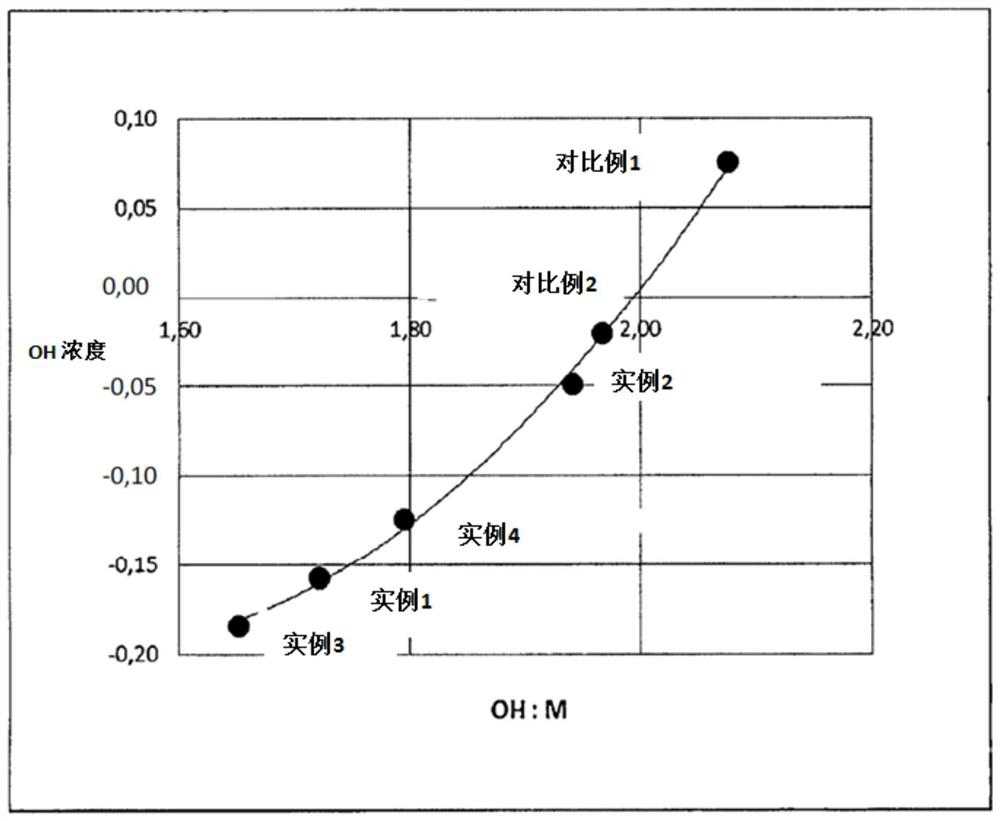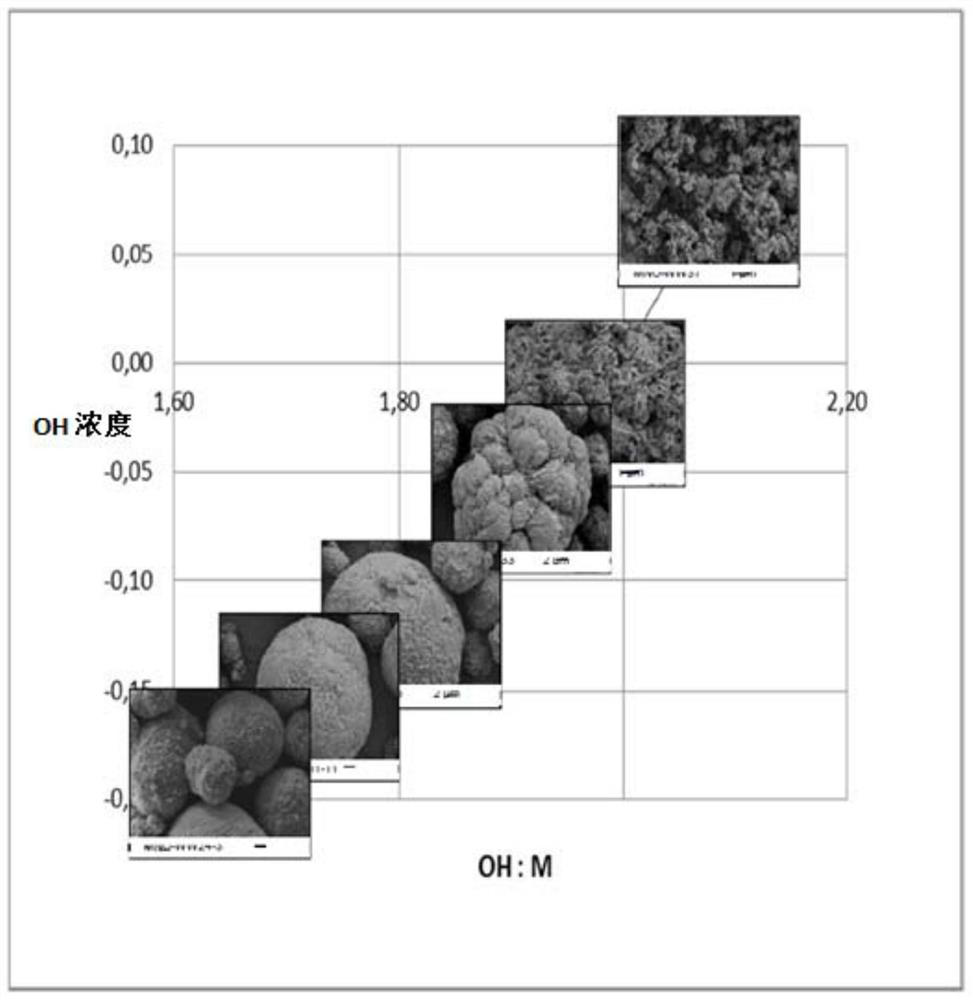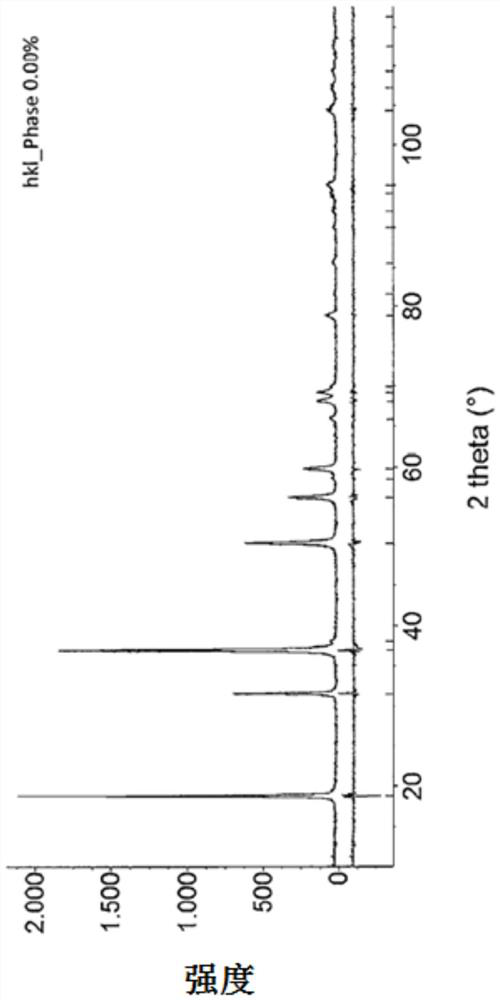Lithium-nickel-manganese-based transition metal oxide particles, their production and their use as electrode materials
一种氧化物颗粒、锂过渡金属的技术,应用在镍化合物、活性物质电极、负电极等方向,能够解决低比表面积等问题
- Summary
- Abstract
- Description
- Claims
- Application Information
AI Technical Summary
Problems solved by technology
Method used
Image
Examples
example
[0137] Measurement methods
[0138] Determination of bulk density and compacted density
[0139] Tap density (synonym: tamped density, tamped density) was determined by means of a tap volume meter (STAV 2003, J. Engelsmann AG) and its manufacturer's instructions for use. For this purpose, the powdery sample is poured into the measuring cylinder, the mass of which is determined by the force applied to the instrument. Before sealing, the bulk density is first determined, which is the quotient of mass and volume. The measuring cylinder was filled and loaded into a compaction volume meter (STAV 2003, J. Engelsmann AG) and compacted 1500 times under otherwise constant conditions. The quotient of the mass and volume of the sample after 1500 times of compaction is the compaction density. The 100ml measuring cylinder used therein has a total measuring volume of 100ml.
[0140] Determination of primary grain size
[0141] The primary crystal diameter of the particles is meas...
example 1
[0147] a) Production of lithium-free transition metal precursors
[0148] The production takes place in a continuous stirred reactor. For this, three different solutions (salt, lye, NH 3 ) were simultaneously added to a reactor containing demineralized water at a constant volumetric flow rate with vigorous stirring. The salt reacts with lye to produce an insoluble precipitate. Simultaneously with the addition of the above-mentioned solution to the reactor, a corresponding amount of the suspension is discharged from the reactor region in the form of overflow. After 6 dwells, a stable equilibrium was established in the reactor and sampling began. The reaction conditions are shown in Table 1.
[0149] After collection, the suspension is filtered through a suction filter. The solids therein are separated from the mother liquor, and then washed with demineralized water until the neutral salts are removed. Carry out chemical analysis to described mother liquor, and measure w...
example 5
[0182] The transition metal oxide prepared in Example 1 was reacted with different amounts of LiI. Li in Example 1 can be adjusted very efficiently by referring to the amount of lithium iodide used 1+x m 2 o 4 Lithium content in (1+x). The product after conversion with LiI still has a shoulder in the reflection mode of its X-ray diffraction pattern, which is specifically marked in the main diffraction peak: 18°=2theta.
[0183] Its crystal structure was determined by X-ray diffraction, as shown in Table 5. Obtained in Example 1, the compacted density is 2.46g / cm 3 Microscopic images of the perlithiated product particles as Figure 7 shown. Pure Phase Li of Space Group I41 / amd 2 Ni 0.5 mn 1.5 o 4 The corresponding X-ray diffraction pattern is given by Figure 8 shown.
[0184]
[0185] As shown, the favorable spherical particle morphology described in the present invention is also maintained after overlithiation.
PUM
| Property | Measurement | Unit |
|---|---|---|
| actual density | aaaaa | aaaaa |
| actual density | aaaaa | aaaaa |
| actual density | aaaaa | aaaaa |
Abstract
Description
Claims
Application Information
 Login to View More
Login to View More - Generate Ideas
- Intellectual Property
- Life Sciences
- Materials
- Tech Scout
- Unparalleled Data Quality
- Higher Quality Content
- 60% Fewer Hallucinations
Browse by: Latest US Patents, China's latest patents, Technical Efficacy Thesaurus, Application Domain, Technology Topic, Popular Technical Reports.
© 2025 PatSnap. All rights reserved.Legal|Privacy policy|Modern Slavery Act Transparency Statement|Sitemap|About US| Contact US: help@patsnap.com



